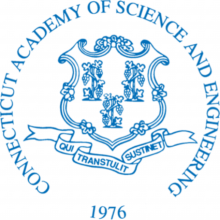Rocky Hill, CT —The Connecticut Academy of Science and Engineering (CASE) will conduct briefings for interested parties on the CASE study entitled, Guidelines for the Development of a Strategic Plan for Accessibility to and Adoption of Broadband Services in Connecticut. The briefings will take place as follows:
- February 6, 8:30-10:00 a.m. – Northwest Connecticut’s Chamber of Commerce, Torrington, CT
- February 14, 8:30-10:00 a.m. – The Chamber of Commerce of Eastern Connecticut, Waterford, CT
- February 16, 8:00-9:30 a.m. – Business Council of Fairfield County, Landmark Square Conference Center, Stamford, CT
The State of Connecticut received federal stimulus funding to create a Strategic Plan for Accessibility to and Adoption of Broadband Services in Connecticut. CASE conducted a study on behalf of the Office of Consumer Counsel and the Public Utilities Regulatory Authority, Department of Energy and Environmental Protection for the purposes of providing guidance for the state to use in its formulation of the strategic plan. The Connecticut Economic Resource Center was engaged by CASE to conduct the research for the\ study. The study methodology included: input from broadband experts; research on leading broadband programs and initiatives; surveys of consumers and businesses; focus groups conducted throughout the state; and integration of the state mapping project findings into the final report. The full report and executive summary are available at www.ctcase.org (scroll down to Reports and
Studies).
The CASE report describes broadband as the electricity of the 21st century and a major driver of the global economy. By improving communication and the flow of information and social interaction, broadband facilitates job creation, reduces miles driven and fossil fuels consumed, expands consumer choice, and improves competition for goods and services. The CASE Study Committee found that given the role broadband plays in increasing economic competitiveness, it merits significant attention from state policy makers to ensure that the state is a global leader in broadband networking capacity that can support the applications of tomorrow, enhancing personal and economic growth and educational attainment.
The report recognizes that Connecticut has benefited from millions of dollars of broadband infrastructure investments by the private and public sectors resulting in nearly ubiquitous broadband service coverage.
However, the CASE study committee found that Connecticut lacks coordination among broadband policy makers and does not have clearly defined broadband goals – a benchmark of successful broadband leaders and programs.
The CASE study committee recommends that the state’s strategic plan should establish goals and objectives, continue initiatives already underway, and leverage public and private investments. The recommendations focus on five main areas that warrant state attention: state organization – including formalizing communications among agencies through a broadband cabinet; establishing goals and progress metrics; adoption of broadband; pole attachment and cell tower siting processes; and infrastructure and access.
###

